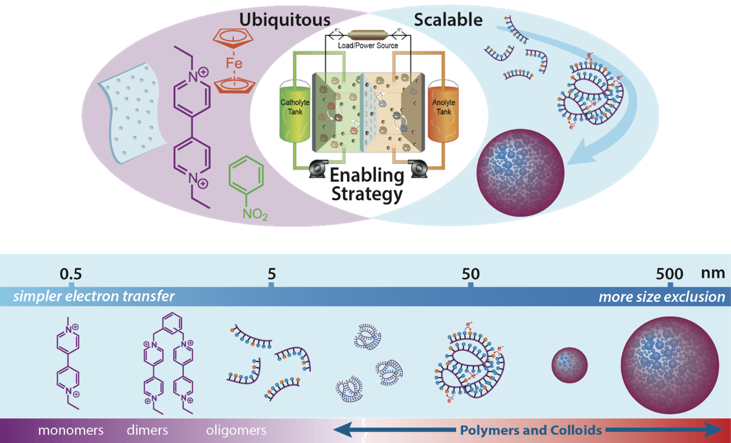
Scientific Achievement
Redox active polymers (RAPs) are highlighted for use as new soluble energy storage materials. This review article shines light on some of the major work from the RAP flow battery sprint in JCESR and provides perspective on future studies of RAPs.
Significance and Impact
This account provides a thorough introduction and explanation of the history and characterization of RAPs for energy storing purposes. This review article is the first of its kind to solely focus on RAPs as soluble nanomaterials with three-dimensional charge transfer processes.
Research Details
- A series of studies on RAPs originating from JCESR research are featured to inform and educate a wide audience on these exciting materials.
- RAPs are shown to be viable candidates to be excluded by size from crossing over a commercial separator while maintaining the facile electrochemistry of its constituent monomer.
- Charge transfer mechanisms for RAPs are evaluated.
- Optimal conditions for reactivity are explored via supporting electrolyte tuning.
- Next-generation systems in the form of redox active colloids (RACs) are highlighted as “zero-crossover” materials with efficient intra-particle charge transport pathways.

